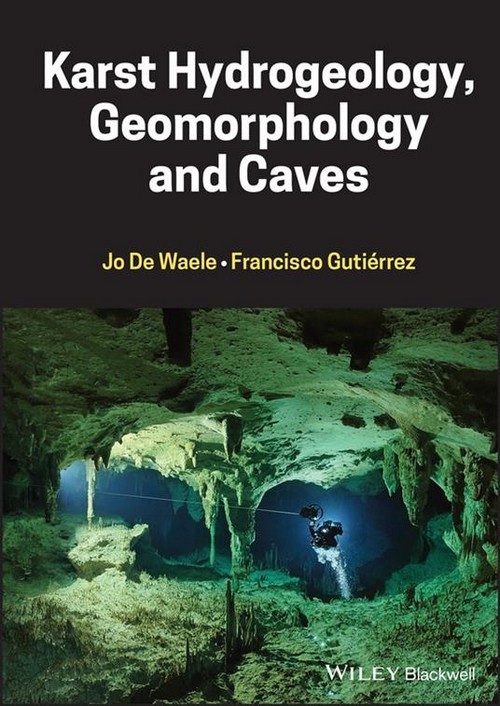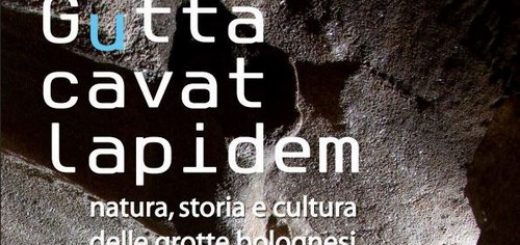Karst hydrogeology, geomorphology and caves
Karst hydrogeology, geomorphology and caves by Jo de Waele / Francisco Gutierrez
When reading the title of the book, it sounds familiar. Indeed, the “bible” of karstologists by Ford & Williams has the title “karst hydrogeology and geomorphology”. So why this similarity? Simply because the original author duo did not want to edit a 3rd edition, so now the authors change.
With the progress of the last decades in karst science, and the general increase in scientific publication, it is not astonishing that the 3rd edition has grown in volume and weight, with 888 pages instead of 562. The hardbound cover makes it heavier, but also more solid.
What about the book? The bummer comes already on the cover: the title photo is printed upside down! The inside, then, is well organized into 11 chapters. An Introduction to karst is followed by a presentation of karst rocks, their dissolution, and the denudation that follows. Karst and water is unseparable, therefore karst hydrogeology plays an important role. The geomorphology of surface features is the discussed, with a special (and newly edited) chapter on special features associated with evaporites. Then we go underground and look at the cave geomorphology, before looking at the sediments that fill them up again. The last chapter on speleogenesis then explains how caves are formed. However, in this great wealth of information the authors regret that resources, tourism, conservation and other “human-centered” aspects of karst are not addressed due to space limitations. This lack might be regrettable, but it is by no means a negative point: there is already so much information that the reader is fully satisfied.
When leafing through its contents, the reader will remark several things: first of all, the professional binding and printing of the book, with easy-to-read fonts and pictures and graphs of great quality, and almost all in color. As in many modern publications, often several photographs are put together with one legend for the group; on one hand this makes it more easy to see the diversity and beauty of the different landscapes, on the other hand, often the photographs are rather small, and good light and/or a magnifying lens would often be welcome. All the chapters are very up-to-date, which is not necessarily common for review bibles, especially with this volume of information. The mixture between text, photos, and illustrations is well-done: Although there are some text-only pages, there are very often carefully reworked and illustrative schemes and beautiful photos, so that it remains a pleasure to go through the book.
Over all, the authors did a very good job reworking the bible. This is probably one of the most difficult tasks, since every reader compares with its famous counterpart and their equally famous authors. In that respect, we have to congratulate!
As with its predecessor, it is not intended to be a schoolbook where interested people learn “what is karst”. It has such a wealth of information and associated citations that it is clearly a reference book. It therefore has its place in the scientist’s bookshelf, but also in the caving club’s library, but not necessarily in the bedroom shelf of an average caver.
Review of Philippe Häuselmann – Versione Italiana sulla rivista
Author(s):Jo De Waele, Francisco Gutiérrez
First published:15 July 2022
Print ISBN:9781119605348 |Online ISBN:9781119605379 |DOI:10.1002/9781119605379
© 2022 John Wiley & Sons Ltd.
Pages: 888
Price: £120 (136 €)










